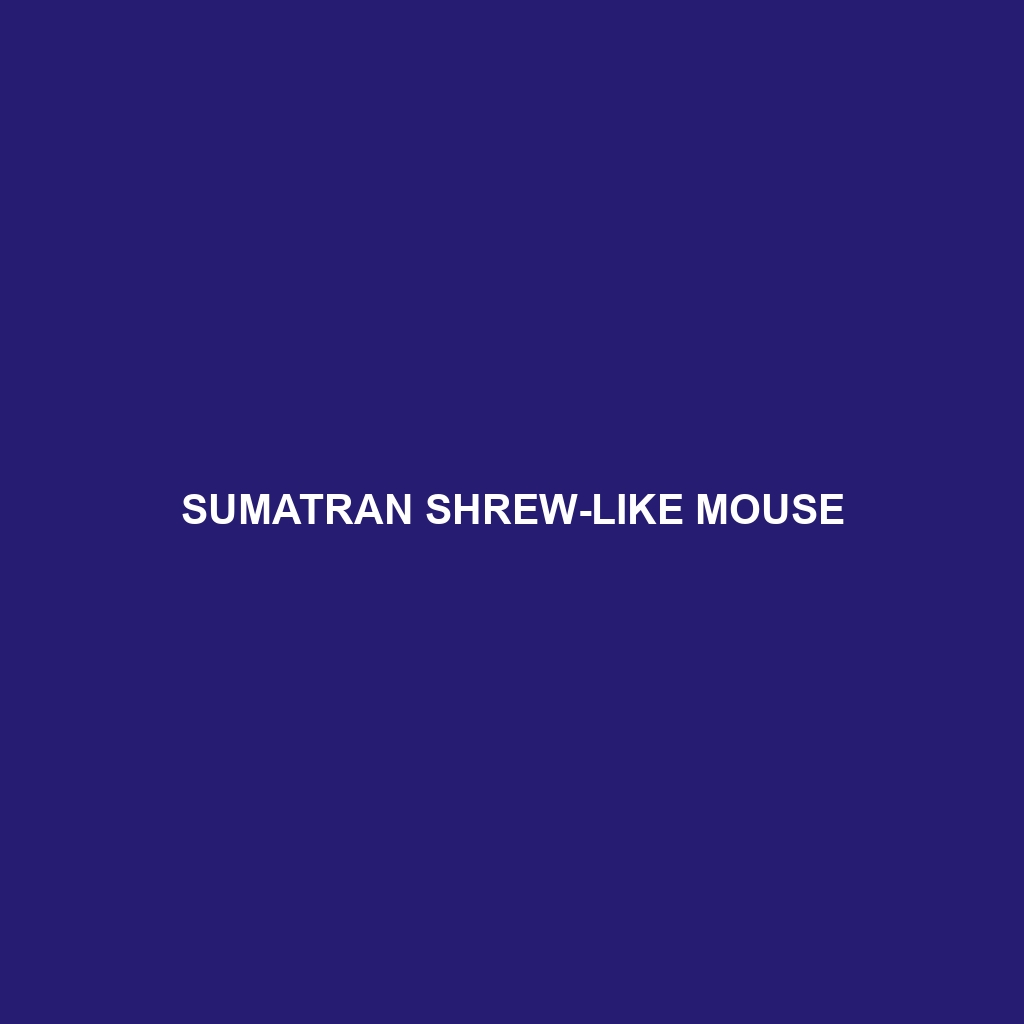Common Name: Sumatran Shrew-like Mouse
Scientific Name:
Habitat:
The Sumatran Shrew-like Mouse primarily inhabits the dense tropical forests of Sumatra, Indonesia. This elusive species is often found in lowland rainforests, montane forests, and occasionally in forest edges. The unique geographical location of Sumatra, with its rich biodiversity and varied elevation, provides an ideal environment for this small mammal.
Physical Characteristics:
Measuring approximately 10 to 15 centimeters in length, the Sumatran Shrew-like Mouse exhibits a slender body adorned with soft, mottled fur. Its coloration ranges from dark brown to gray, with a lighter underbelly. Distinctively, it has a pointed snout and long, sensitive whiskers that aid its navigation through dense foliage. Its relatively long tail, almost equal in length to its body, allows for agile movement and balance as it scurries through its habitat.
Behavior:
The Sumatran Shrew-like Mouse is mostly nocturnal, displaying a range of fascinating behaviors. It is known for its elusive nature, often hiding in leaf litter and underbrush during the day. This species is territorial, often marking its domain with scent. It is also a proficient climber, utilizing trees for foraging and escape from predators. Its communication involves a series of high-pitched squeaks, especially during mating season.
Diet:
This mammal primarily feeds on insects, small invertebrates, and various fruits found in its forest environment. The Sumatran Shrew-like Mouse’s diet is insectivorous, making it an essential player in controlling insect populations. It is also known to scavenge fallen fruits, showcasing its adaptability in the search for food sources within its habitat.
Reproduction:
Breeding in the Sumatran Shrew-like Mouse typically occurs during the wet season, when food availability is at its peak. The female gives birth to a litter of usually 2 to 4 offspring after a gestation period of around 25–30 days. The young are altricial, meaning they are born hairless and depend on their mother for sustenance and protection during the initial weeks of life.
Conservation Status:
The Sumatran Shrew-like Mouse is currently classified as vulnerable due to habitat loss from deforestation, agriculture, and urban development. Conservation efforts are essential to protect this species from further decline and to preserve its unique rainforest habitat.
Interesting Facts:
One fascinating aspect of the Sumatran Shrew-like Mouse is its ability to climb, a behavior not commonly seen in many rodents. Additionally, it plays a crucial role in seed dispersal, contributing to the health of tropical forest ecosystems. Despite its small size, the mouse is a resilient species known for its adaptability.
Role in Ecosystem:
The Sumatran Shrew-like Mouse serves an essential role in its ecosystem as both a predator and prey. By consuming insects, it helps maintain the balance of insect populations, while also providing a food source for larger predators like birds and snakes. This dynamic interaction highlights the importance of the Sumatran Shrew-like Mouse in the intricate web of biodiversity within its tropical habitat.
